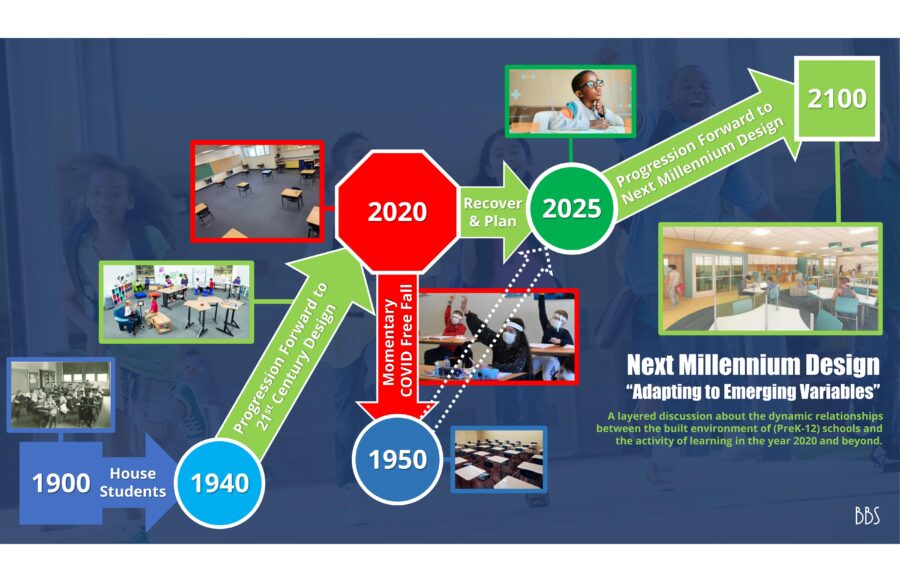Please join Kevin Walsh AIA, ALEP, LEED AP, in partnership with Nassau BOCES and the Long Island Chapter of the American Institute of Architects, to the second of a three-part webinar series focusing on SCHOOL PLANNING AND DESIGN FOR COVID-19.
The webinar series provides an opportunity for design professionals and the educational community to explore emerging design trends in school design resulting from the Covid-19 pandemic and examine potential short and long-term strategies to enhance education. The second webinar was titled:
Next Millennium Design: “Adapting to Emerging Variables”
Date: October 14, 2020

Description:
This discussion will provide a lens through which to look at school facility design and its goal of engaging students in a safe and inspirational learning environment, with reference to the differences and commonalities of approach before 2020 to the present, then onward into the future from a NYS, Northeast Regional perspective.
Learning Objectives:
After attending this program, participants will be able to:
1. Gain an understanding of the complementary roles of Architect and Learning Environment Planner.
2. Have greater exposure to dynamic planning and design motivations for new and renovated (PreK-12) school facilities that are student-centered for active learning in the context of community involvement.
3. Gain general knowledge of the progression of school facility design over the past century, and of how different school districts may have multiple buildings/artifacts from multiple eras. How can we ‘connect’ these buildings through time by the thoughtful consideration of their adaption forward?
4. Have a better understanding of how the built environment can help promote student engagement and provide for student-based learning, by allowing for a stable yet flexible, comfortable yet purposeful sense of place ‘to want to come back to’; a place to thrive and grow: a ‘Community of Place’.
5. Have a greater understanding of ways to think collectively about designing new schools, and perhaps even more importantly how to apply these thoughts to existing (PreK-12) school buildings, always with long term community value and collaboration in mind. How did the events of 2020 affect this process?
6. Have a conceptual set of tools available to plan for the longer-term future of (PreK-12) schools and expanded student-based learning environments through the opportunities of Next Millennium Design.
